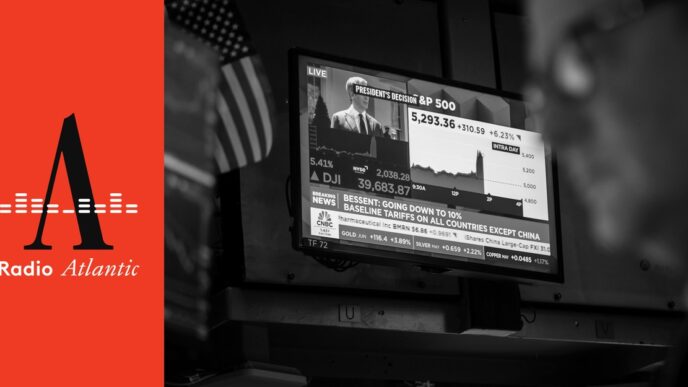The madness started, as baseball madness tends to start, with the New York Yankees: At the end of March, during the opening weekend of the new season, the team’s first three batters hit home runs on the first three pitches thrown their way. The final score, 20–9, was almost too good to be true. And then, everybody noticed the bats.
A handful of Yankees had used unconventional instruments to hit their home runs: Their bats bulged out a little near the end, such that they were shaped more like bowling pins than clubs. It turned out they’d been designed by an MIT-trained physicist and were tailored to each player’s swing, with the bulge positioned at the place on the bat where that player tends to hit the ball. Yes, after at least a century’s worth of baseball bats that all looked more or less the same—“it must be made of wood, and may be of any length to suit the striker,” reads a set of rules from 1861—the art of making striker’s wood had at last produced a major innovation. After the Yankees hit a franchise-record nine home runs in that one game, media coverage of torpedo bats exploded, and manufacturers are struggling to meet demand from other teams. Even fantasy baseball leagues have cottoned to the trend. “This is torpedomania,” said the CEO of a major bat maker.
At first glance, the craze appears to be the culmination of the data-driven tweaks that have overhauled the modern game. A pursuit of minute statistical advantages characterizes nearly every aspect of baseball today: Pitchers maximize effectiveness by throwing the ball as hard as possible, and rarely spend more than five innings in a game; managers eschew traditional—and suboptimal—strategies such as bunting and stealing bases; fans obsess over esoteric performance metrics with names such as “wRC” and “xFIP.” Now the data revolution is reimagining one of the game’s most fundamental tools: the bat.
The idea of the bowling-pin shape is actually a few years old and has been explored by multiple teams. Aaron Leanhardt, the aforementioned MIT physicist, began designing the Yankees’ torpedo bats in 2022 as a minor-league hitting coach for the team, and some major leaguers were using them last year. His premise was straightforward: Standard bats are widest and heaviest at the tip, but players prefer to make contact with a pitch closer to the midpoint. That’s in part because a bat’s “sweet spot”—the portion of the wood that transfers the most energy on contact—is also a few inches down the barrel from the end. To address this inefficiency, torpedo bats are made with more wood in the sweet spot and less wood elsewhere—thus, the bulge. The idea was to “put it where you’re trying to hit the ball,” Leanhardt told The Athletic.
But that premise may be suspect. Despite their Moneyball makeover, torpedo bats remain, for now, a blunt instrument, largely superstition with a patina of data. Though it seems like common sense that adding heft to the part of the bat where a player hits the ball would be advantageous, several physicists who study baseball bats told me that’s not necessarily true. Because a bat has a thick barrel and rotates when swung, its motion and power depend on the distribution of weight across the entire shaft, not just in one spot. In other words, the physics aren’t cut-and-dried: A bulging sweet spot may provide more space for making contact with the ball, but it likely won’t provide more power. (The Miami Marlins, for whom Leanhardt now works as a field coordinator, declined a request for comment.)
All of the mass along a bat’s barrel, not just at the point of contact, contributes to the impact. As a result, shifting some wood from the end of the barrel to the sweet spot will not make the bat more powerful, Lloyd Smith, a mechanical engineer who studies ball-bat collisions at Washington State University, told me. Brian Hillerich, the director of professional bat production at Hillerich & Bradsby Co., which makes bats for Louisville Slugger, said that even if torpedo bats are not more powerful, they still promote more consistent contact at the sweet spot, which would tend to help a player’s performance. Smith and other physicists said this is possible, but remains unproved.
In any case, by redistributing some mass closer to the handle, the bowling-pin design could actually make a bat feel lighter when swung—it could lower the “moment of inertia,” in physics parlance. That will allow a player to increase his bat speed, but it also shrinks the force he can apply upon contact. These two factors may well cancel out, Dan Russell, a physicist at Penn State who studies baseball-bat vibrations, told me. (Imagine swinging a hammer while gripping its head instead of its handle: It might move faster, but it wouldn’t do a better job of pounding nails.) A torpedo bat could also be constructed by adding extra wood to make the bulge instead of merely shifting it from other places on the barrel. This would keep the “moment of inertia” constant—the bat would be heavier on a scale but feel the same when swung. Baseball bats used to have more heft as a rule; Babe Ruth swung clubs perhaps 50 percent heavier than today’s. But the net effects remain unclear, and would depend on each particular player’s strength and swing.
A faster swing could still be useful even if it doesn’t give a hitter greater power: “You simply have better bat control, can wait a little longer on the pitch before deciding to swing, make adjustments once you’ve started,” Alan Nathan, who studies the physics of baseball at the University of Illinois, told me. That won’t be the case for everyone—athletes who have spent years honing their swings and timing could be thrown off by the new shape, and several players using torpedo bats have had terrible starts to this season. Hillerich told me that his company designs torpedo bats with this in mind, trying to make them feel as similar to a player’s original bat as possible. It might all be a matter of preference and confidence—and others may not care that much either way. The new shape feels the same in his hands, Jazz Chisholm, a torpedo-wielding Yankee, recently said. “I don’t know the science of it. I’m just playing baseball.”
That the Yankees had a historically great game, and that some players were using funny-looking bats, “is more coincidence than destiny or science,” Smith told me. After all, nobody noticed the new shape last season, and for good reason—there’s simply not enough information, either from MLB games or physics labs, to definitively say what these bats offer, and to which players. Smith said he suspects that “the number of athletes this torpedo bat benefits is going to be fairly narrow.”
Indeed, the current buzz about the bats is pretty much the opposite of being data-driven. In an interview last week with The Athletic, Brett Laxton, the lead bat maker at Marucci Sports, pointed to the fact that Giancarlo Stanton, the Yankees’ designated hitter, had hit three home runs in his first game using a torpedo bat last year. That was “a good eye test” of the technology, he said, invoking just the kind of baseball intuition that statistics-driven analysts would sneer at. Yes, the bat felt and looked good in Stanton’s hands; no, this is not sabermetrics. Meanwhile, other “eye tests” have yielded more ambiguous results. Elly de la Cruz, of the Cincinnati Reds, hit two home runs in his first game using the torpedo bat, for instance, then went 0–4 the next day. Max Muncy, of the Los Angeles Dodgers, tried using a torpedo bat and recorded three outs in a row, then switched back to his old wood and hit a game-tying double.
If anything, the torpedo bats harken to an era before Moneyball, computers, or even the official formation of Major League Baseball. The late 1800s were a time of “great experimentation” in bat design, John Thorn, MLB’s official historian, told me: four-sided bats and flat bats, bats with slits for springs and sliding weights. All of that tinkering has long been left behind, however, and the modern, non-torpedo bat now seems like a simple fact of the game. Perhaps the biggest change to bat manufacturing in recent decades happened in the 1990s, when Barry Bonds started swinging bats made from maple instead of ash, and the rest of the league followed. That, too, had an element of superstition: As it turns out, a bat made from maple wood transfers a little bit less energy to a ball than one made from ash. Bonds, who hit more home runs than any MLB player in history, “could have hit the ball just a bit further if he had stayed with ash,” Smith told me.
Thorn takes issue with the whole discussion. “The whole idea that the magic is in the bat rather than in the batter is fraud,” Thorn said. “It’s calumny.” Of course, baseball players and fans have always been in pursuit of magic. They once used less pretentious tricks—eating chicken before each game, wearing a gold thong to emerge from a funk—but these have now been funneled through the optimization craze; instead of mismatched socks, there are “literal genius”–designed bats. In an era when baseball teams will squeeze any source of data for tiny statistical advantages, torpedomania pretends to be yet another nerd-ish secret weapon. Perhaps, for some subset of players, the new design really is miraculous. More likely, though, when the stats have all been counted and compared, we’ll discover that the torpedo bat is no different from any other talisman in baseball: a ridiculous distraction; a delightful waste of time.














